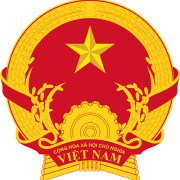
Viettel said to use the 4G services, users will have to change their SIM cards but the rates will not be higher than the current 3G services.
This telecom service provider plans to have 12,000 4G base transceiver stations by the end of the first quarter 2016, besides 67,000 existing 2G and 3G stations.
Since 2009, Vietnam has invested in development of 3G (third generation) technology. After five years of implementation, the number of 3G subscribers increased from 7 million in 2009 to nearly 29 million in January 2015, accounting for nearly one-third of the population. The number of subscribers continues to increase dramatically.
The 3G technology covers all 63 provinces in the country, even islands and remote areas. The quality of 3G services has also improved significantly, reaching 42 Mbps. Charges for 3G services have been slashed.
In 2012, 4G technology boomed and gradually replaced 3G technology. By late 2014, the world had more than 300 telecom firms in more than 100 countries providing 4G services. There were 61 providers in 25 countries in Asia.
In Southeast Asia, 4G services have been successfully developed in countries with advanced technology such as Singapore, Malaysia, Indonesia, and Brunei. In the countries in the Mekong sub-river basin, the 4G technology is still in a testing phase or has been just implemented.
Following the global trend, the Ministry of Information and Communications has chosen 2015 as the appropriate time to deploy 4G technology in Vietnam. However, only Viettel has decided to launch the 4G services.
4G is the fourth generation of mobile telecommunications technology, succeeding 3G and preceding 5G. A 4G system, in addition to the usual voice and other services of 3G, provides mobile broadband Internet access, for example, to laptops with wireless modems, to smartphones, and to other mobile devices. Potential and current applications include amended mobile web access, IP telephony, gaming services, high-definition mobile TV, video conferencing, 3D television, and cloud computing.
Two 4G candidate systems are commercially deployed: the Mobile WiMAX standard (first used in South Korea in 2007), and the first-release Long Term Evolution (LTE) standard (in Oslo, Norway and Stockholm, Sweden since 2009). It has however been debated if these first-release versions should be considered to be 4G or not, as discussed in the technical definition section below.
